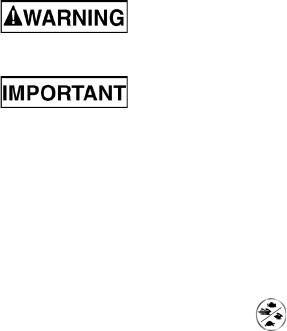
• 41 •
battery, that was not fully charged, you may lose some of the battery’s capacity. This
would cause the large battery to be unable to hold a charge and become useless.
Therefore, we do not recommend charging a large battery on the maintenance setting.
NOTE: The maintain mode technology utilized in Schumacher chargers allows you to
safely charge and maintain a healthy battery for extended periods of time. However,
problems with the battery, electrical problems in the vehicle, improper connections
or other unanticipated conditions could cause excessive current draws. As such,
occasionally monitoring your battery and the charging process is recommended.
Using the Engine Start feature
Your battery charger can be used to jumpstart your car if the battery is low. Follow these
instructions on how to use the ENGINE START feature.
Follow all safety instructions and precautions for charging your battery.
Wear complete eye protection and clothing protection. Charge your battery in a well-
ventilated area.
Using the ENGINE START feature WITHOUT a battery installed in the
vehicle could cause damage to the vehicle’s electrical system.
NOTE: If you have charged the battery and it still will not start your car, do not use the
engine start feature, or it could damage the vehicle’s electrical system.
With the charger unplugged from the AC outlet, connect the charger to the battery 1.
following the instructions given in section 6 (FOLLOW THESE STEPS WHEN THE
BATTERY IS INSTALLED IN A VEHICLE).
Plug the charger AC power cord into the AC outlet.2.
With the charger plugged in and connected to the battery of the vehicle, set the 3.
Function switch up to the engine start position.
Press the Charge Rate button 4. to 150 amps. After a second or two the display
will show .
Crank the engine until it starts or 3 seconds pass. If the engine does not start, wait 4 5.
minutes before cranking again. This allows the charger and battery to cool down.
NOTE: During extremely cold weather, or if the battery is under 2 volts, charge the
battery for 5 minutes before cranking the engine.
If the engine fails to start, charge the battery for 5 more minutes before attempting to 6.
crank the engine again.
After the engine starts, move the Function switch to the OFF (O)7. position and unplug
the AC power cord before disconnecting the battery clips from the vehicle.
Clean and store the charger in a dry location.8.
NOTE: If the engine does turn over but never starts, there is not a problem with the
starting system; there is a problem somewhere else with the vehicle. STOP cranking the
engine until the other problem has been diagnosed and corrected.
Engine Starting Notes
During the starting sequence listed above, the charger is set to one of three states.
Wait for cranking – The charger waits until the engine is actually being cranked before
delivering the 150 amps for engine start. The charger delivers charge at a rate of up
to 10 amps while waiting and will reset if the engine is not cranked within 15 minutes.
(If the charger resets, it sets itself to the default start up settings). While waiting for
cranking, the digital display shows rdy.
Cranking – When cranking is detected, the charger will automatically deliver up to its
maximum output as required by the starting system for up to 3 seconds or until the
engine cranking stops. The digital display shows a countdown of the remaining crank
time. It starts at 10 and counts down to 0.
Cool Down – After cranking, the charger enters a mandatory 4 minute (240 second)
cool down state. During this period, no settings can be changed. The buttons are
ignored. The digital display indicates the remaining cool down time in seconds. It starts
at 240 and counts down to 0. During the cool down period, no current is delivered to the
battery. After 4 minutes, the digital display will change from displaying the countdown
back to displaying rdy indicating that another crank cycle can be started.


















